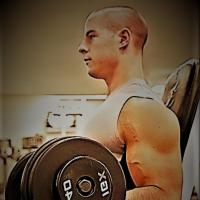Be honest.
On average, how many times have you told yourself that this time is going to be different?
“This time I'm going all in and work out regularly, keep a diet, get in top shape, and lose weight.”

If you're like most people, my guess would be, probably a lot.
The reason I ask is that even when most Americans, (if not all) want to live a healthier life, unfortunately, very few pull through and do what it takes in order to achieve it.
Around 75% of American adults don't meet the recommended activity guidelines for aerobic and strength training.
So, If you're a "victim of the statistics," stick around because I'm going to break down for you the process of how to start a workout plan and stick to it.
Let's start.
Why Even Exercise?
Regular exercise can combat serious health conditions by improving blood circulation and hearth health.
Serious conditions that can be prevented include stroke, metabolic syndrome, high blood pressure, type 2 diabetes, depression and anxiety.
When looking for motivators that help you start a workout plan, keeping these diseases from becoming an issue is a great advantage to consider.
If you have trouble sleeping, exercise can help. Physical activity can help you fall asleep faster and reach deeper sleep levels.
As a result, it will improve your mood and will give your body a longer chance to recover during sleep.
An additional benefit of exercise is that it can be a social activity. Sports give you a chance to unwind, enjoy the outdoors and engage with friends.
Even simple outdoor activities like hiking can be an enjoyable experience that have the added benefits of aerobic exercise.
Including physical activity in the plans for a summer party can help you connect with family and friends in a fun social setting.
What Type Of Workouts Can I Do?
The four types of recommended regular exercises include strength training, aerobic activity, high-intensity interval training, and flexibility training.
(There are other types of workouts you can do, but for the purpose of this article I'll stick to the following four)
Weightlifting / Strength Training
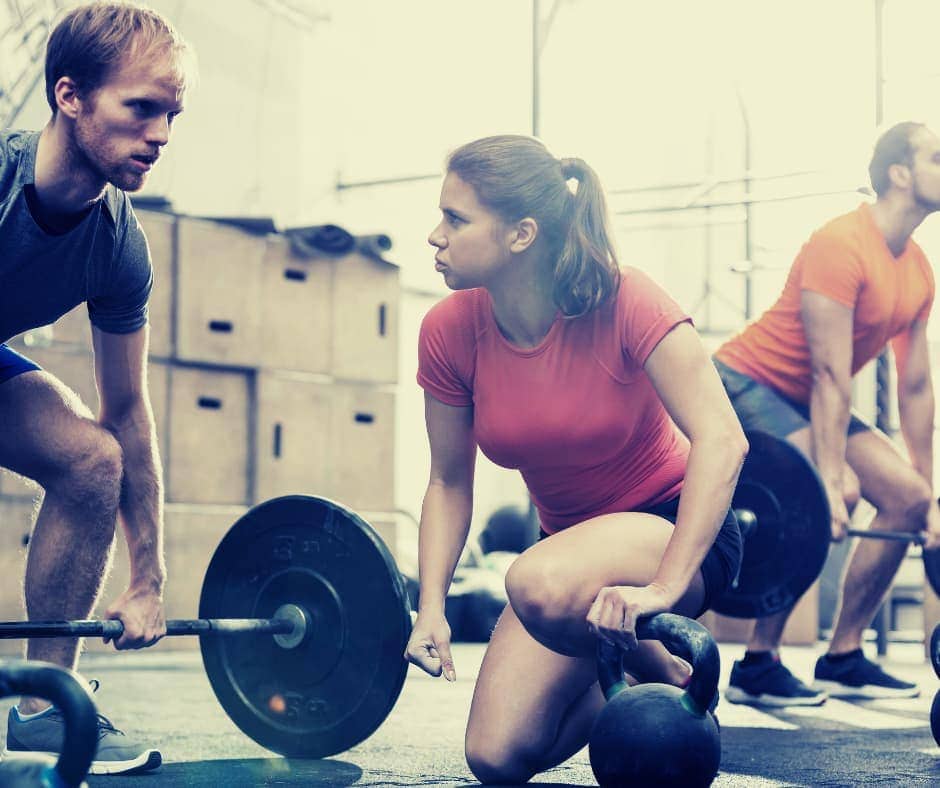
Weightlifting builds muscle mass and helps you feel more confident while performing daily tasks.
When you're lifting weights, or do any type of strength training, you're using resistance to create muscular contraction which translates to stronger and bigger muscles, strength boost, anaerobic endurance and more.
Strengthening your muscles stimulates bone growth, lowers blood sugar and assists with weight control.
If that's not enough, you should also expect improvements in balance and posture. As a result, it can also help alleviate lower back pain and joint pain.
Bottom line, If getting shredded or big and bulky is your thing, weightlifting should be your go-to workout.
Aerobic / Cardio
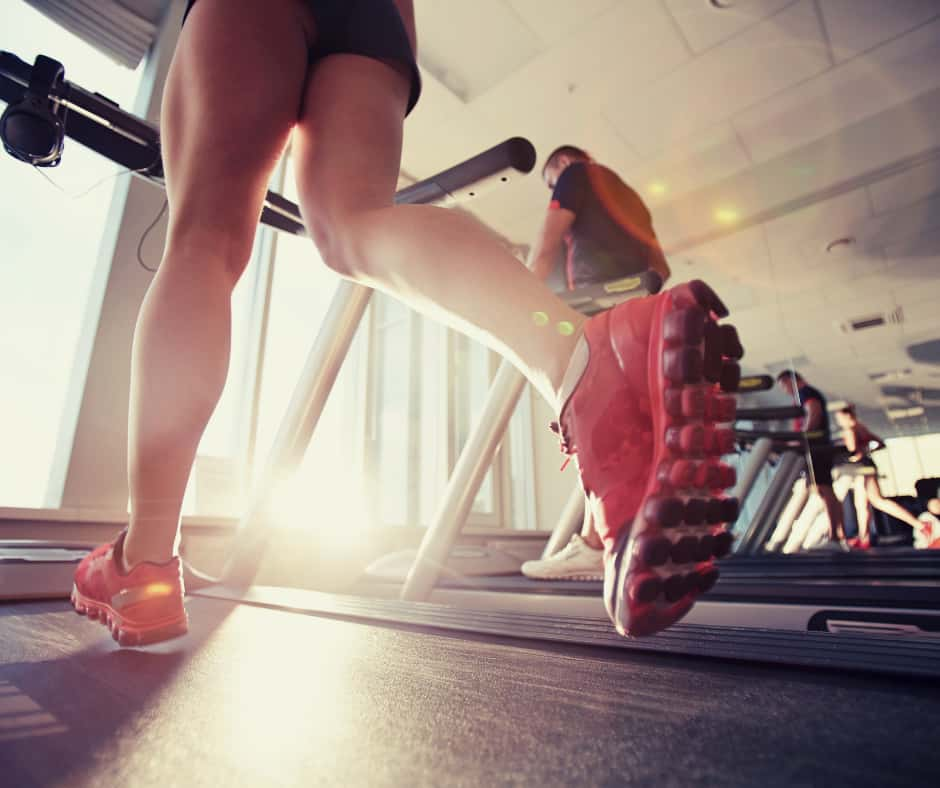
Aerobic exercise is meant to increase circulation and internal oxygen flow.
It also increases your heart rate and breathing, which helps to relax blood vessel walls and lower blood pressure.
If you have low resistance and are winded easily by simple tasks, you may want to consider integrating aerobic exercise into your workout routine.
Conditioning your heart and lungs to pump enough oxygenated blood throughout your body during times of stress will increase your endurance.
A major advantage of aerobic exercise is that it can lower bad cholesterol levels over the long term.
This makes aerobic exercise a great choice for reducing your risk of heart disease, cancer, depression and stroke.
When just starting to build your workout routine, try jogging or swimming to incorporate aerobic activity.
If you find that it's too much for you, break up your moderate-intensity workout with rest periods.
With aerobics you should at least aim to do up to 150 full minutes of moderate-intensity activity.
High-Intensity Interval Training (HIIT)

High-intensity interval training is an efficient way to effectively burn fat.
It is defined as a short, high-intensity period of exercise and is intended to boost your heart rate and respiration rate.
This training technique includes intense bursts of exercise that are quickly followed by short recovery periods.
HIIT raises your heart rate and sustains it for the optimal amount of time to help your body burn fat.
This is a great type of training for those who are looking to manage their weight or prevent heart disease.
Flexibility

Flexibility training is done through stretching techniques. As we age, we tend to lose a lot of flexibility in our muscles and tendons (source 5).
This can increase our risk for uncomfortable muscle cramps, muscle damage, joint pain and falling.
While flexibility is often overlooked, it is an important part of any workout routine.
It can make your muscles longer and more flexible. It can also increase your range of motion and reduce risks of injury while you play sports.
In any way you should be stretching at the beginning and end of your workout. Stretching gets oxygenated blood to muscles, which makes them amenable to changes in motion.
Bottom line, If you're exercising, you should be stretching.
Just How Much Should I Exercise?
You should aim for a goal of 150 minutes of moderate-intensity aerobic physical activity every week.
Most prefer to break this up into sessions that span over four or five days (source 6).
If you are at higher fitness levels, you can substitute two minutes of moderate-intensity activity for one minute of vigorous activity.
This means to meet your aerobic physical activity goal each week, you would need 75 minutes of vigorous activity instead of moderate activity.
Assessing how much you should exercise needs to also focus on the number of days you workout.
Try to spread your physical activity out over several days of the week. This helps prevent the risk of injury due to overexertion.
On rest days, you should not have long blocks of time that require physical activity. On active days, you can try to work out in sessions and spread a workout over the course of an entire day.
You should also take into consideration strength training. While aerobic activity is important for overall health, weightlifting can help improve balance and coordination.
Choosing multi-function strengthening exercises can help ensure that your strength-building training reaches all parts of your body.
Sit ups and push ups are the most common exercise that people use to increase their strength and endurance.
Terms You Need To Know
A set is a group of repetitions performed together with inter-spaced rest periods. For example, if you curl a dumbell three times, take a rest, and curl it three additional times, those groups of dumbell reps represent two sets.
Reps is an abbreviation for repetitions, defining the total number of times you perform an exercise. For example, if you curl a dumbell three times, you performed three reps.
You warm-up at the beginning of your workout. Warm ups consist of a gradual increase in intensity in physical activity that raises your heart rate. They also include flexibility exercises to reduce the risk of injury. Following a warm up, you should be prepared for physical activity.
You cool-down at the end of your workout to help your body recover from it. Cool-downs usually last five minutes or so, but at a slower pace and reduced intensity than your workout.
Before You Start
Before starting your workout routine, be sure to consult your physician if you have any doubts about your capabilities or fitness level.
If you have health conditions that could put you in danger, take your doctor's advice on how to stay active and safe.
1. How Fit Are You?
Before you begin your workout routine, you need to know where you're starting.
To assess your fitness levels, perform exercise tests. This will help you know how to start building your workout plan and will prevent injury caused by overexertion.
Strength Test

The push up test is a basic and easy exercise to test your muscular strength.
To test your arm strength, begin by placing your hands directly under your shoulders and extend your legs behind you with your knees on the floor.
Then, bend your elbows to lower your chest to within an inch of the floor while keeping your back flat, and pressing back to start.
See how many push ups you can perform in a two minute time period. Then, compare your results to the chart below to see where your fitness level is.
Level: Needs Improvement/Fair
Ages 20-29: less than 14
Ages 30-39: less than 12
Ages 40-49: less than 10
Level: Good
Ages 20-29: 15-20
Ages 30-39: 13-19
Ages 40-49: 11-14
Level: Very Good/Excellent
Ages 20-29: 21+
Ages 30-39: 20+
Ages 40-49: 15+
If you find that you need improvement, work this into your workout routine.
It can be difficult to improve if you've been inactive for a long period of time, but it is even more difficult to improve if you don't test your strength.
Testing your strength gives you a clear idea of what you need to work on.
Flexibility Test

Another fitness test involves flexibility.
This can be one of the most important things to determine when it comes to your capabilities, since stretching too far can cause injury.
To test flexibility, position a measuring tape on the floor with a 12-inch piece of tape across it at the 15-inch mark.
Sit barefoot on the flood with your back straight, and feet about a food apart, with heels on the edges of the tape.
Then, reach forward as far down the tape as you're able.
Try this three or four times and record your longest reach. Comparing your reach to the chart below will assist you in knowing your fitness level with respect to flexibility (source 7).
Level: Needs Improvement
Ages 18-25: less than 18"
Ages 26-35: less than 18"
Ages 36-45: less than 16"
Level: Good
Ages 18-25: 19-20"
Ages 26-35: 19-20"
Ages 36-45: 17-18"
Level: Very Good/Excellent
Ages 18-25: 21+"
Ages 26-35: 20+"
Ages 36-45: 19+"
Endurance Test

To test your endurance, you should estimate your aerobic capacity, or how easy it is for you to maintain a sustained moderate-intensity activity.
To perform a cardio test, start by walking as fast as you can for one mile. Record your time and record your heart rate.
Following the test, find your pulse and count the number of heartbeats per 15 seconds.
Multiply this number by four, and use the formula below to calculate your aerobic capacity:
132.853—(0.1692 x weight in kilograms)—(0.3877 x age in years)—(3.2649 x time in minutes)—(0.1565 x heart rate in beats per minute)
(You can calculate your weight in kilograms. Just multiply your weight in pounds by 0.454)
Then, with your aerobic capacity score, you are able to determine what level of exercise you should perform with the chart below.
Level: Needs Improvement
Ages 20-29: less than 39.4
Ages 30-39: less than 37.6
Ages 40-49: less than 35.8
Level: Good
Ages 20-29: 39.5-43.8
Ages 30-39: 37.7-42.3
Ages 40-49: 35.9-39.5
Level: Very Good/Excellent
Ages 20-29: 43.9+
Ages 30-39: 42.4+
Ages 40-49: 39.6+
2. Get A Proper Meal Plan

When looking for a good meal plan, it should take into consideration your health goals and your health limitations.
If you have a health condition that is affected by your diet, such as diabetes, heart disease or allergies, take this into consideration before setting up your ideal meal plan.
Other important considerations include your preferences and budget.
If you're looking for a weight-loss diet, you may prefer group support over online support.
Some weight-loss programs require you to buy supplements, meals, visit clinics and attend support meetings.
Make sure you consider budget and how to maintain your meal plan if you choose a weight-loss program.
Good diets to alight with weight-loss goals can include flexibility and balance to make an effective pair with your exercise plan.
A flexible meal plan doesn't cut you off from entire food groups. Instead, it includes a variety of healthy foods from all of the major food groups.
Healthy weight-loss diets include vegetables, fruits, whole grains, low-fat dairy products, lean protein sources and nuts and seeds.
The best plans allow an occasional indulgence from a sweet food group.
Furthermore, a good meal plans features foods that you can easily find on your own in your local grocery store.
Accessibility is important for the continuance of your regular workout routine and diet.
Healthy meal plans tend to limit alcohol, sugary drinks and high-sugar containing foods.
Balance is important in any successful meal plan.
Depending on your goals, you may have definitive caloric intake requirements. Even the most strict diets provide you with adequate, balanced calories and nutrients.
Consuming large quantities of low-calorie, nutrient-rich foods can create a good balance that allows you to effectively cut calories.
A poorly balanced meal plan often eliminates entire food groups, with can cause intestinal distress.
For example, eliminating carbohydrates can cause nutritional problems.
A proper meal plan should provide you with adequate nutrition with the addition of certain foods.
Safe and healthy diets, when paired with targeted exercise, do not normally require excessive supplements.
3. Record Your Current Measurements

Take your body's current measurements so you know exactly where you're starting.
This can be a motivational piece of knowledge to use later down the road, when you can compare results.
To take measurements of your body for workout purposes, focus on your chest, waist, hips and arms.
These body parts are often targeted areas for exercise routines.
To measure your chest, use a tape measure and place it directly under your breasts or pectoral muscles.
When measuring your waist, measure at the narrowest point around your navel.
To measure hips, measure around the widest part of your hip bones.
To measure your arms, measure above your elbows at the largest part of the arm.
Keep all of these measurements for comparison later on. You may be surprised at how far you're able to come!
4. Make Sure To Set Realistic Goals
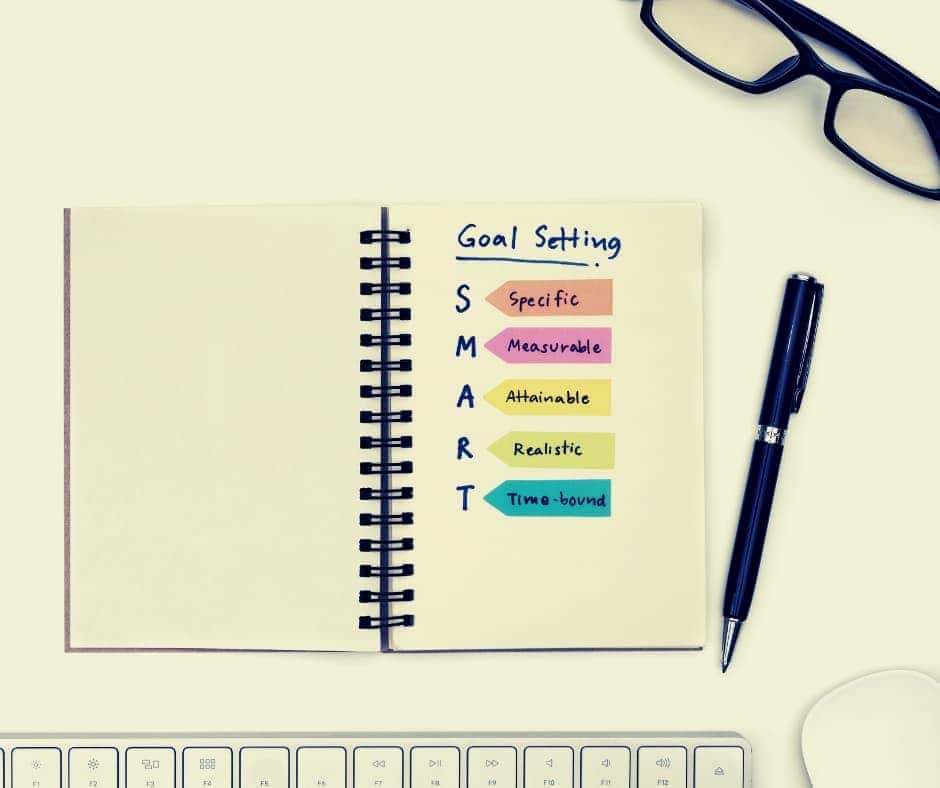
Make sure to set realistic and achievable goals in your workout regimen.
To get results and not get discouraged, you need to set goals that will actually work for you.
Setting goals that are specific, measurable, attainable, realistic and timely will help you reach those goals.
If you decide to try something too intense, you may become discouraged. By assessing your physical fitness level, you know where you can begin.
Attainable and realistic goals include activities that keep you motivated and moving toward your ultimate goal.
Every exercise you perform should be within your physical fitness capabilities, and only push you as far as you can go without becoming injured.
5. Don't Forget To Listen To Your Body

When working out, you always need to listen to what your body's telling you.
If you know that you're pushing yourself too far too fast, you run the risk of muscle injury or a heart issue.
Make sure to know your limits by adequately testing your fitness and taking adequate rest days.
6. Know That Your Going To Have Bad Days (And That's OK!)
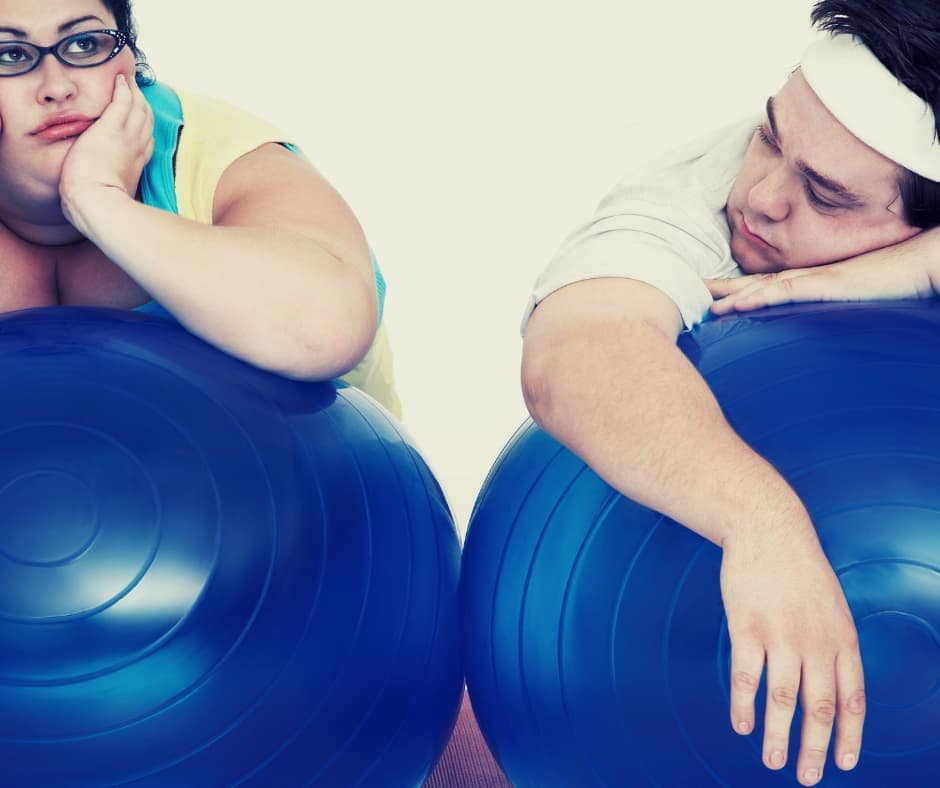
When beginning to work out, know that you might fail in reaching your goals. That's OK!
Many people who start working out to achieve a specific goal often fall short of their aspirations.
The most important thing to remember is that you are active every day, whether or not you reach your daily goals.
Staying active requires dedication, and not reaching your goals can be discouraging.
Remembering that you have set attainable goals and continuously trying, even if you fail, is an important part of any workout regimen.
How To Start A Workout Plan?
When first looking at how to begin a workout plan, you need to consider your overall health goals, so...
1. What Do You Want To Achieve?

If you are looking to lose weight with your exercise routine, focus on cardio and aerobic exercises on a consistent basis.
This can mean incorporating a moderate amount of high-intensity exercise.
While weight-loss goals are beneficial, it can be important to remember that they are long-term goals.
In the day to day, strive to focus on the exercise you're performing. This will help you move forward and reach your goals.
If you want to achieve a stronger physique and are trying to bulk up, strengthening exercises should be your main focus.
When performing strength-building exercises, always make sure to do a good amount of reps for each muscle you want to improve.
Including muscles you want to target in your strength-building workout routine will help you increase strength where you want to.
For those who want to perform better in a particular sport, focusing on the muscles that their sport uses can be beneficial.
If you participate in a sport that requires a lot of leg work, consider strength-building activities on a leg machine at the gym.
Most sports also have a cardio component, so working running or other aerobic exercise into your workout routine can help you achieve your team's goals.
2. Take Baby Steps
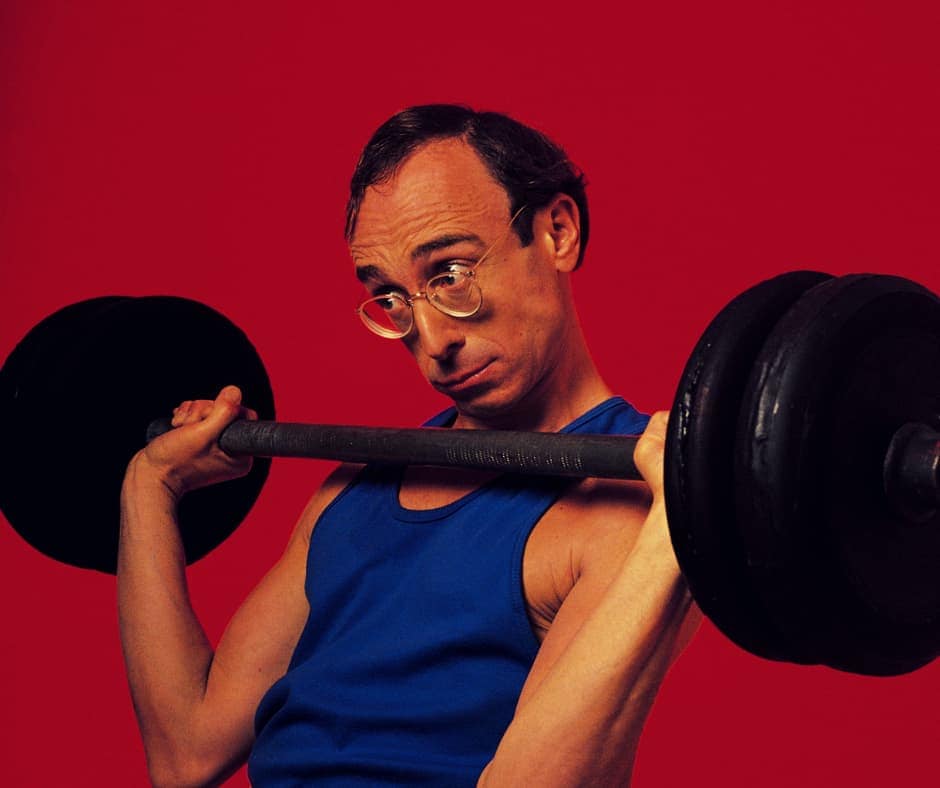
Take things slow when you first start your workout regimen.
It is not wise to jump right to your maximum goal weight when lifting a weight bar, because you can cause muscle strain and sprain.
You might hurt yourself if you go too far right from the get go. In addition, failing to compete sets or reps properly might hurt your motivation level.
It might also mean that you're exercising for nothing, which will result in you not seeing any results.
Starting where you're at and gradually increasing your exercise intensity is the best way to start a workout routine.
3. Stay Active Even On Rest Days

Comprehensive workout routines have rest days.
On these days, where no specific exercise is scheduled, get active in different ways.
Swimming is a beneficial activity to take up, because it can help your muscles recover while still staying active.
4. Combine Different Activities
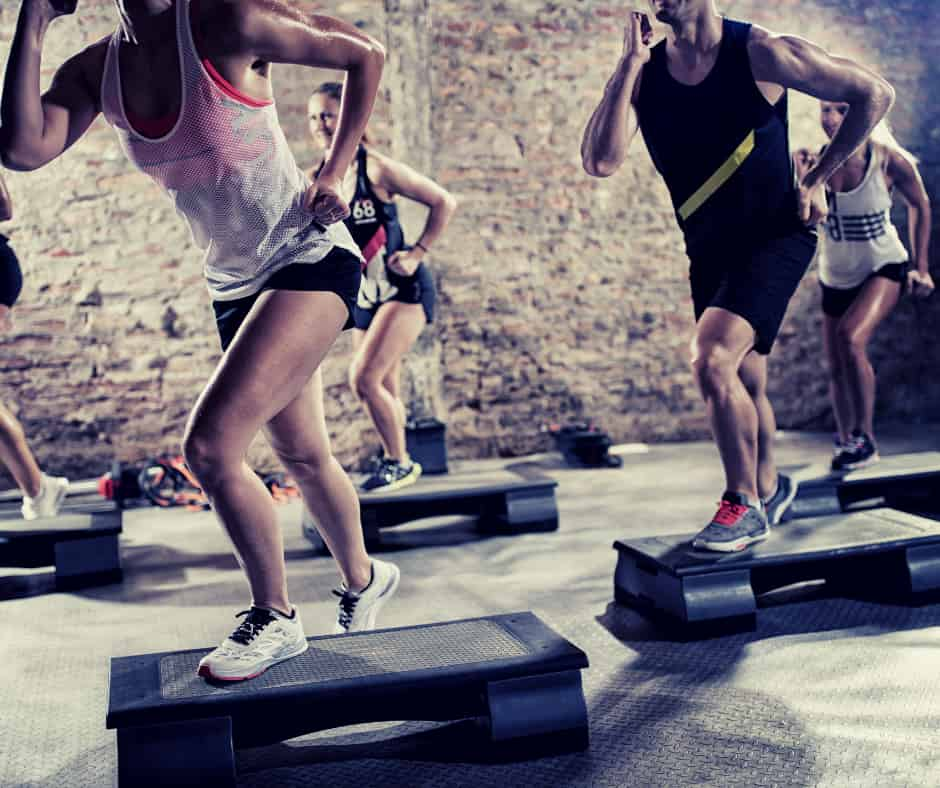
The best types of workout routines combine different activities, to keep things interesting and interactive.
In a single session, consider combining resistance training and weightlifting.
There are popular exercise classes that combine multiple types of exercise for maximum impact.
If you're interested in combining exercises but don't know where to start, consider looking into local workout classes at your gym or activity centers.
Some popular combination routines are Crossfit and Zumba, which combine resistance training and aerobic activities.
5. Give Your Body The Time To Recover

When starting a workout routine, it's important to remember that your body still needs rest.
Give your body a chance to recover after every workout by properly cooling down. Try to refrain from physically intense activities in the hour directly after your workout.
Rest days are important to incorporate into your workout routine. These days of minimal activity promote cell growth and muscle recovery.
How Do I Actually Workout?
Knowing how to workout properly can maximize the effects of exercise and reduce the likelihood of injury.
Read below for some guidance on each of the four common types of exercise.
Weightlifting / Strength Training
Weight-lifting is a poplar strength-building, muscle pumping, body shredding exercise.
If you choose this type, consider your weight-lifting goal and current capabilities.
The idea behind weightlifting/strength training is to use resistance to work your muscles.
What ever you can use to create sufficient resistance level should be good enough for you and your body.
That means you can even use your body's weight to create the resistance, but I won't get into it now.
When you're just starting out, try to workout at-least three times a week. (Check out my 3 day split workout for beginners)
Going for more than four might shock your body, and you don't want that.
Your workout should take at-least 45 minutes. That's including your warm-ups and cool-downs.
You should also try to preform 15 reps and at-least three sets per exercise.
Of-course you would have to work with weights that will allow you to do 15 reps. So go for weight that you feel is heavy, but doesn't make you break form.
This way, you can keep proper form while also feeling pumped when you get to the last reps.
If you've hit the last rep and it feels like a walk in the park, increase the weight you're lifting.
Aerobic / Cardio Exercise
A smart move from you would be to choose a favorable exercise that your current fitness levels allow.
I mean, there's no way you would stick to your workouts if you don't enjoy them, right?
A good aerobic exercises would be one that increase your blood flow, pumps your heart rate, and gets your muscles going.
As I said earlier, you should aim for at-least 150 minutes of exercise a week.
Don't stress yourself with calories burnt, pace, or even distance traveled.
When you're just starting focus on actually working out.
Luckily there are plenty of exercises you can choose from.
Take a brisk walk, take a swim, ride a bicycle, go jogging, hiking, any type of sports, and the list can go on and on.
All of these activities can help you start aerobic exercise and can be increased in intensity as you become healthier.
High-Intensity Interval Training (HIIT)
First of all, if you're a complete beginner, I wouldn't recommend going with HIIT when just starting out. In any way, always consult your physician first.
The main benefit of HIIT workout is that it helps your body keep burning calories at much higher rate up to 48-72 hours after your workout.
It's why HIIT is one of the most challenging and difficult workout out there, but also one that can show quick results.
Another great thing about it, is that it requires less time from you to put it, simply because of its high intensity level.
Furthermore, it requires almost no equipment whatsoever.
However, because of its nature, you should give your body a longer time to recover, so it's not recommended to do HIIT workouts more than 3 times a week.
As its name suggests, HIIT exercises are about getting your heart to beat at an estimated 80% to 95% of its max rate.
Of-course all without making you overexerting yourself.
Resting periods between exercises may take some time, since your heart should go down to between 40% and 50% of its max rate.
I would like to mention that you can modify and change any HIIT program to fit you, your abilities, and even medical condition.
But, you shouldn't do it alone, always consult a professional when it comes to your health, don't take unnecessary risks.
Flexibility
Flexibility level is basically the range of motion of muscles and connective tissues at a joint or group of joints.
Which basically translates to how smoothly your body "operates".
The main benefit of flexibility training is increasing the range of motion of your muscles and joints.
But the indirect benefits of having muscles and joints with a longer range of motion include, less risk of injuries, less pain, improved posture and balance, improved physical ability, and of course improved flexibility.
How To Stick To Your Workout Plan
What's the point in starting a workout plan if you're just gonna give up in a couple of week, or even days? Well, no point.
The benefits exercising regularly should keep you motivated to stay active so you're able to stay healthy.
But, if that's not enough, here are my share of tips that might help you stick to your workout plan.
1. Work On Your Mental Health

If you tell yourself you don't have the energy, time or power to exercise, then guess what, you really won't have any.
The good news are, it works the same way around.
If you tell yourself regularly that you do have the power, energy, and you make the time for it, then surprise surprise, you'll find it's actually quite easy sticking to your workout plan.
Another thing you can do is to visualize your success, or how you'll feel or look when you reach your end-goal.
Close your eyes and try to imagine that moment when you're so satisfied with yourself for putting all that hard work that actually paid off.
Furthermore, try to enjoy what you're doing and do what gives you joy.
Focus on exercises that are actually fun for you to do.
The greatest point of all is that regular physical exercise is one of the ways to work on your mental strength.
An increase in blood flow and circulation helps to improve cognitive functions like memory recall, problem solving, concentration, and attention to detail.
Swimming has cardiovascular and muscle-building benefits, but also involves constant information processing and learning.
A regular exercise routine can help you be more mindful of your breathing rhythm and help you increase blood circulation to the brain.
You work on your mental health to keep you exercising, and exercising helps boosting that same mental health that got you started.
So, I guess you can say it's like an never-ending circle. (circle of life, anyone?)
2. Turn Your Exercise Into A Habit

Try to turn your workout time into a habit, and it will begin to fit more easily in your day-to-day routine.
I won't get into the whole "how to develop habits" mechanism, but I will say that working out should be under the same category in your brain as brushing your teeth, sleeping, eating, or watching Netflix.
Here's a great guide on how to build new habits by James Clear.
And here's another cool method that might be worth trying, The 20 second rule.
3. Find A Workout Buddy
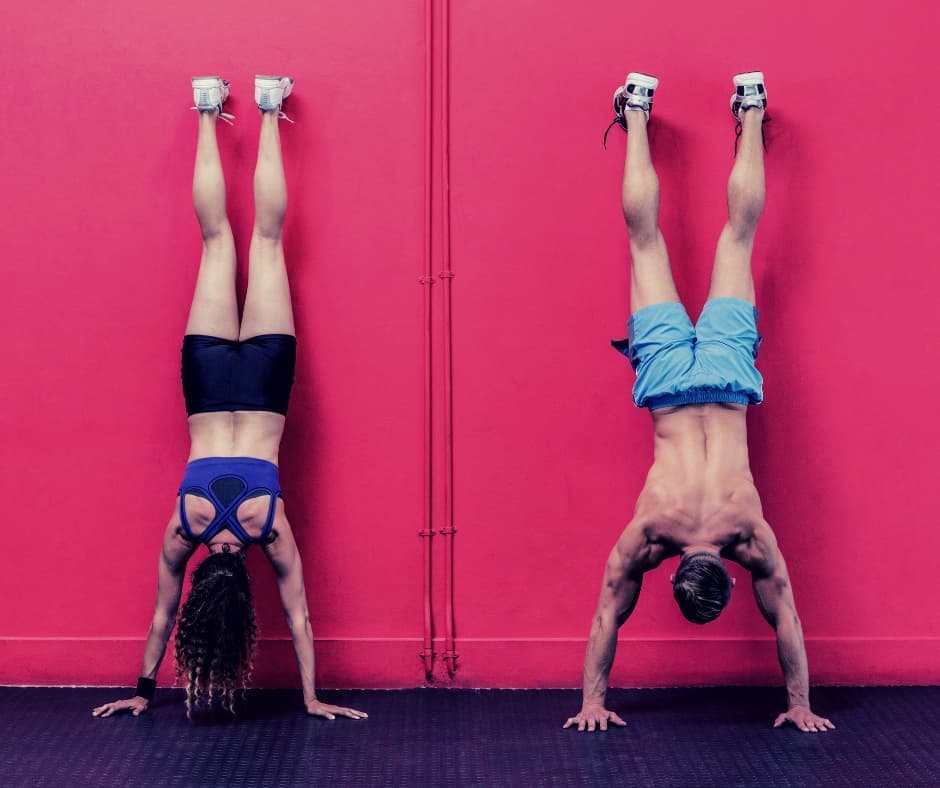
Finding a workout buddy can help increase your motivation by providing peer support.
It's also beneficial because you and your workout buddy can hold each other accountable for your goals.
Having a workout buddy with similar goals can also help assist you in staying motivated to do unpleasant exercises.
For example, it can be helpful to have a buddy if you need to work on aerobic fitness, but get bored easily with running.
Having a partner that keeps you interested as you run can be beneficial to your motivation.
4. Don't Get Caught Up In Numbers

Try not to focus too much on the day-to-day readings from the weight scale.
One way people get discouraged is when they don't meet their goals as quickly as they want to.
Keep your head in the game by considering weight loss as one of several benefits to staying active.
Always keep in mind that your health is more than the number you see on a weight scale.
5. Remember That's It's Not All Or Nothing!

Regular exercise is not "all or nothing."
Any amount of physical exercise is beneficial and can help boost your mood.
Beyond the physical effects you see with a regular exercise routine, always keep in mind that your internal health benefits as well.
The benefits of regular exercise for blood circulation and heart health begin as soon as you take one step on a treadmill. It's just important to remember to keep trying.
A nice trick you can try is to tell yourself you're only going to exercise for like 5 minutes.
You'll be surprised how those 5 minutes extended to more than 20 once you get yourself going.
Wrapping It Up
Creating, executing and sticking with a workout plan benefits you on many levels.
Regular exercise can help improve your cardiovascular health and help you reach your fitness goals.
If you're worried about how to stick to a workout plan, consider pairing up with a buddy or joining exercise classes at your local community center.
It's also important to know you might fail, and to continue your exercise routine anyway.
If you work through the difficulties, consult a physician, create a tailored plan and stick to your plan, your desired health benefits are within reach!

